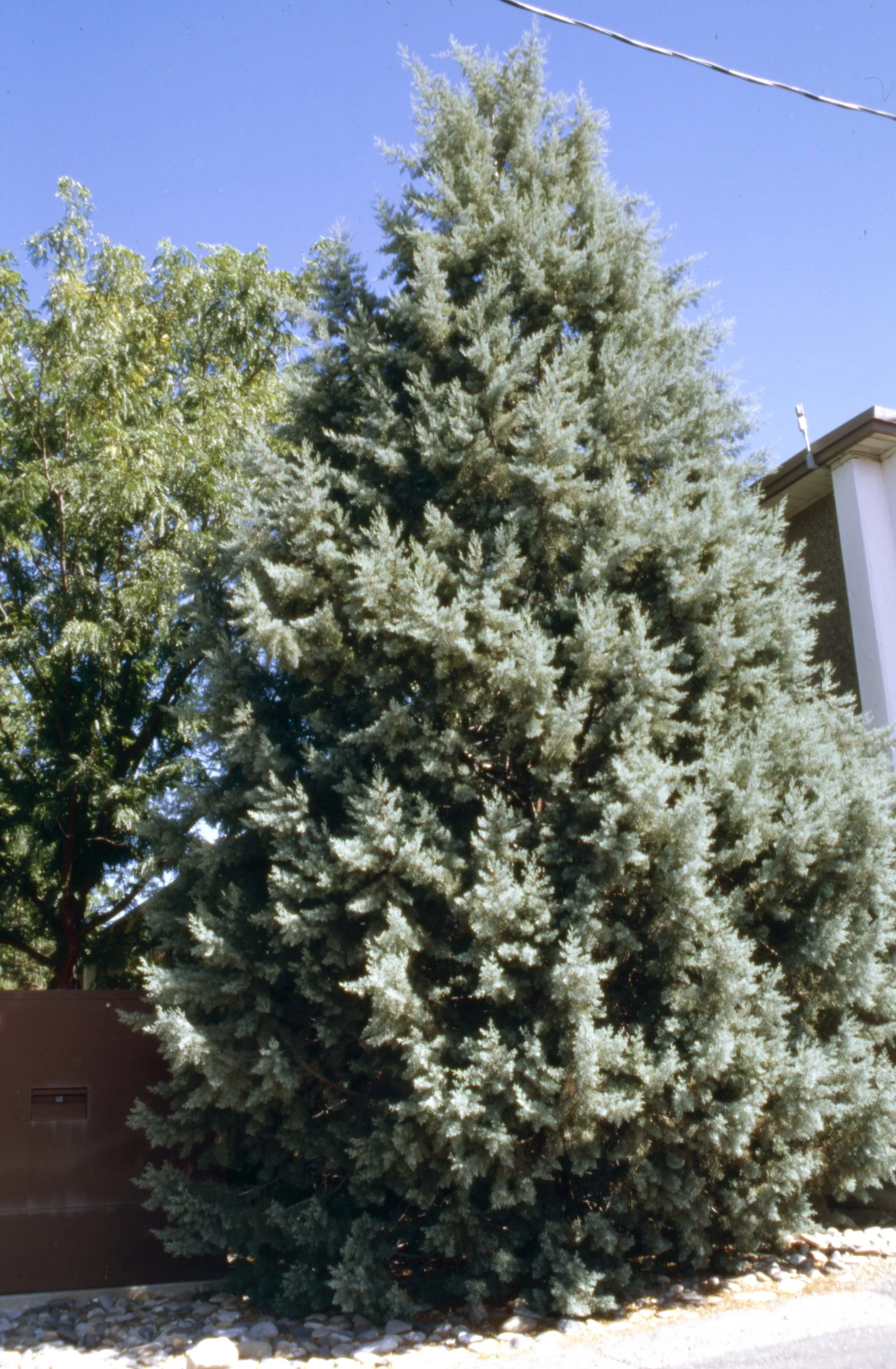Arizona cypress (Hesperocyparis arizonica)
Second place champion Arizona cypress in Grand Junction.
Species info:
Leaves: Scale-like evergreen foliage forming dense sprays along the twigs. Color varies from dull green to silver-blue depending on provenance and genetics.
Leaflets: None (foliage consists of overlapping scales typical of cypress species).
Leaf Surface: Tight, pressed scales with a smooth, resinous texture; aromatic when crushed; foliage arranged in flattened or somewhat rounded sprays.
Bark: Thin, fibrous bark with irregular, peeling scales. Young bark sheds to reveal cherry-red inner bark. Mature bark becomes slightly furrowed with age.
Flowers: Inconspicuous; male and female cones borne on the same tree (monoecious). Male pollen structures appear in small clusters.
Fruit: Rounded cones ¾–1 inch in diameter, produced in clusters. Cones persist on the tree and release seed as they dry and open. Seeds require bare mineral soil to germinate.
Botanical: Hesperocyparis arizonica
Family: Cupressaceae
Mature Height: Typically 40–50 feet in Colorado landscapes; up to 70 feet in ideal native environments
Canopy Spread: 10–20 feet; narrow and columnar to pyramidal
Foliage Type: Evergreen conifer
Flower: Inconspicuous
Fruit: Cone
Fall Color: Evergreen
Tree Shape: Columnar-pyramidal with dense, layered foliage; maintains a strong central leader
Growth Rate: Moderate
Water Use: Low to moderate; adapted to dry Southwestern climates
Hardiness: Zones 5–7; best in warmer parts of Colorado and protected locations
Soil Preference: Performs well in both acidic and alkaline soils; requires well-drained sites; tolerates rocky and lean soils
Sun Exposure: Full sun
Wildlife Value: Provides year-round cover for birds and small mammals; cones offer limited food value
Wood: Durable, aromatic, and decay-resistant; historically used for posts, construction, and specialty woodwork
Pests/Pathogens: Few issues observed in Colorado; in native range may be affected by mistletoe, rusts, and defoliators
Planting Recommendations: Recommended for most sites, but seed source is important for cold hardiness
Information Sources:
Front Range Tree Recommendation List
USDA Forest Service, Fire Effects Information System Database
Elbert L. Little, The Audubon Society Field Guide to North American Trees -- Western Region.


